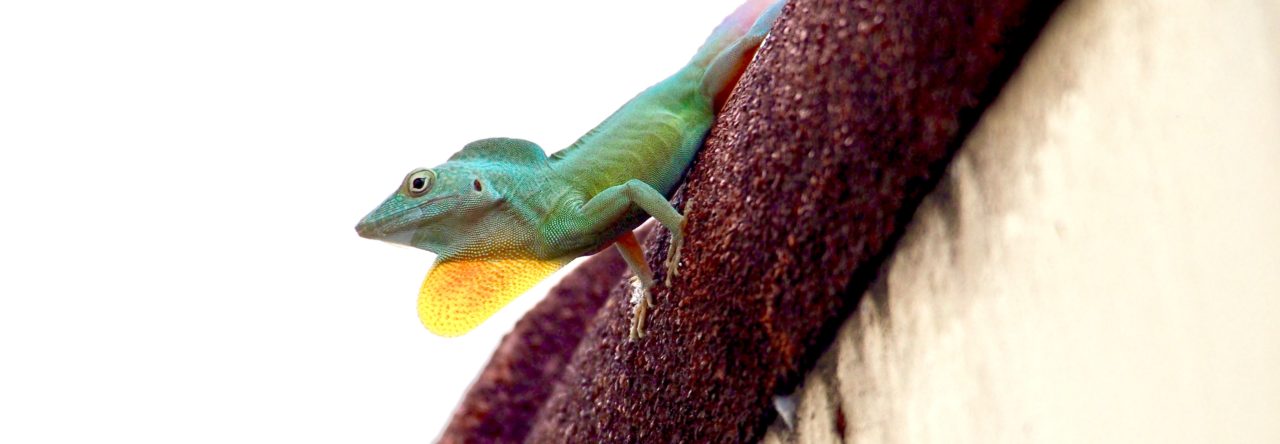It is somewhat intuitive to assume that the body temperatures of “cold-blooded” animals like anoles must closely match ambient temperatures. For example, lizards from cold climates should be active at colder body temperatures than those from warm climates, and body temperature should change throughout the day in concert with air temperature. As Martha Muñoz has discussed, Cowles and Bogert laid this expectation to rest in 1944. They demonstrated that lizards can behaviorally thermoregulate, altering the effective thermal environment that they experience to remain within a “preferred” temperature range while active.
The potential benefits of behavioral thermoregulation are pretty obvious. Seek out a little sunlight on a cold day and you can go from freezing your hemi-penes off to enjoying a fulfilling day of doing whatever a lizard might find fulfilling. So for many years after Cowles and Bogert, observing patterns consistent with behavioral thermoregulation became the expectation.











